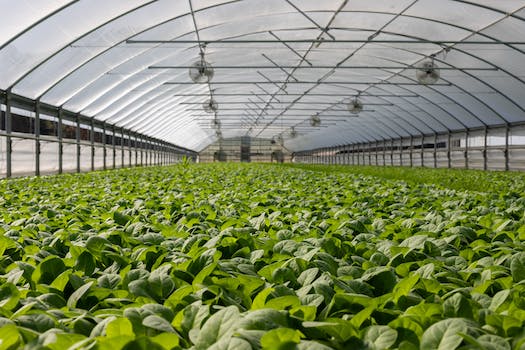-
Table of Contents
- Which of the Following is Not a Greenhouse Gas?
- Understanding Greenhouse Gases
- The Greenhouse Gases
- 1. Carbon Dioxide (CO2)
- 2. Methane (CH4)
- 3. Nitrous Oxide (N2O)
- 4. Oxygen (O2)
- 5. Fluorinated Gases
- Q&A
- 1. Are greenhouse gases harmful to the environment?
- 2. Which greenhouse gas has the highest warming potential?
- 3. How can we reduce greenhouse gas emissions?
- 4. Can we remove greenhouse gases from the atmosphere?
- 5. What are the consequences of not addressing greenhouse gas emissions?
- Summary

Greenhouse gases play a significant role in the Earth’s climate system, trapping heat and contributing to global warming. While there are several greenhouse gases, not all substances are classified as such. In this article, we will explore the different types of greenhouse gases and identify which of the following is not a greenhouse gas.
Understanding Greenhouse Gases
Before we delve into the specific gases, let’s first understand what greenhouse gases are and how they affect the Earth’s climate. Greenhouse gases are gases that trap heat in the atmosphere, preventing it from escaping into space. This phenomenon is known as the greenhouse effect. Without greenhouse gases, the Earth’s average temperature would be much colder, making it uninhabitable for most forms of life.
The primary greenhouse gases responsible for the greenhouse effect are carbon dioxide (CO2), methane (CH4), nitrous oxide (N2O), and fluorinated gases. These gases are released into the atmosphere through natural processes and human activities, such as burning fossil fuels, deforestation, and industrial processes.
The Greenhouse Gases
Now, let’s examine each of the following gases to determine which one is not classified as a greenhouse gas:
1. Carbon Dioxide (CO2)
Carbon dioxide is the most well-known greenhouse gas and is primarily released through the burning of fossil fuels, such as coal, oil, and natural gas. It is also emitted through deforestation and other land-use changes. Carbon dioxide accounts for approximately 76% of global greenhouse gas emissions.
2. Methane (CH4)
Methane is another potent greenhouse gas, with a much higher warming potential than carbon dioxide. It is released during the production and transport of coal, oil, and natural gas. Methane is also emitted by livestock and other agricultural practices, as well as the decay of organic waste in landfills.
3. Nitrous Oxide (N2O)
Nitrous oxide is a powerful greenhouse gas that is released through agricultural and industrial activities, as well as the combustion of fossil fuels and solid waste. It is also emitted naturally by biological processes in soils and oceans. Nitrous oxide has a warming potential nearly 300 times greater than carbon dioxide.
4. Oxygen (O2)
Oxygen is not classified as a greenhouse gas. While it is essential for supporting life on Earth, it does not possess the properties necessary to trap heat in the atmosphere. Oxygen makes up approximately 21% of the Earth’s atmosphere and is crucial for the respiration of living organisms.
5. Fluorinated Gases
Fluorinated gases are a group of synthetic gases used in various industrial applications, such as refrigeration, air conditioning, and electronics manufacturing. These gases have extremely high global warming potentials and can remain in the atmosphere for an extended period. Examples of fluorinated gases include hydrofluorocarbons (HFCs), perfluorocarbons (PFCs), and sulfur hexafluoride (SF6).
Q&A
Here are some common questions related to greenhouse gases:
1. Are greenhouse gases harmful to the environment?
While greenhouse gases are essential for maintaining the Earth’s temperature, an excessive increase in their concentration can lead to global warming and climate change. This can have detrimental effects on ecosystems, weather patterns, and human health.
2. Which greenhouse gas has the highest warming potential?
Among the commonly emitted greenhouse gases, fluorinated gases have the highest warming potentials. Sulfur hexafluoride (SF6) has a warming potential over 23,000 times greater than carbon dioxide.
3. How can we reduce greenhouse gas emissions?
Reducing greenhouse gas emissions requires a collective effort from individuals, businesses, and governments. Some effective strategies include transitioning to renewable energy sources, improving energy efficiency, promoting sustainable agriculture practices, and investing in public transportation.
4. Can we remove greenhouse gases from the atmosphere?
While it is challenging to remove greenhouse gases from the atmosphere once they are emitted, there are technologies being developed to capture and store carbon dioxide, known as carbon capture and storage (CCS). Additionally, reforestation and afforestation efforts can help absorb carbon dioxide from the atmosphere.
5. What are the consequences of not addressing greenhouse gas emissions?
If greenhouse gas emissions continue to rise unchecked, the Earth’s temperature will continue to increase, leading to more frequent and severe heatwaves, droughts, storms, and rising sea levels. This can result in the displacement of communities, loss of biodiversity, and disruptions to food production.
Summary
In conclusion, the greenhouse gases responsible for the greenhouse effect and global warming include carbon dioxide, methane, nitrous oxide, and fluorinated gases. Oxygen, while essential for life, is not classified as a greenhouse gas. Understanding the different types of greenhouse gases and their sources is crucial in developing strategies to mitigate climate change and reduce greenhouse gas emissions. By taking collective action, we can work towards a more sustainable and resilient future for our planet.






